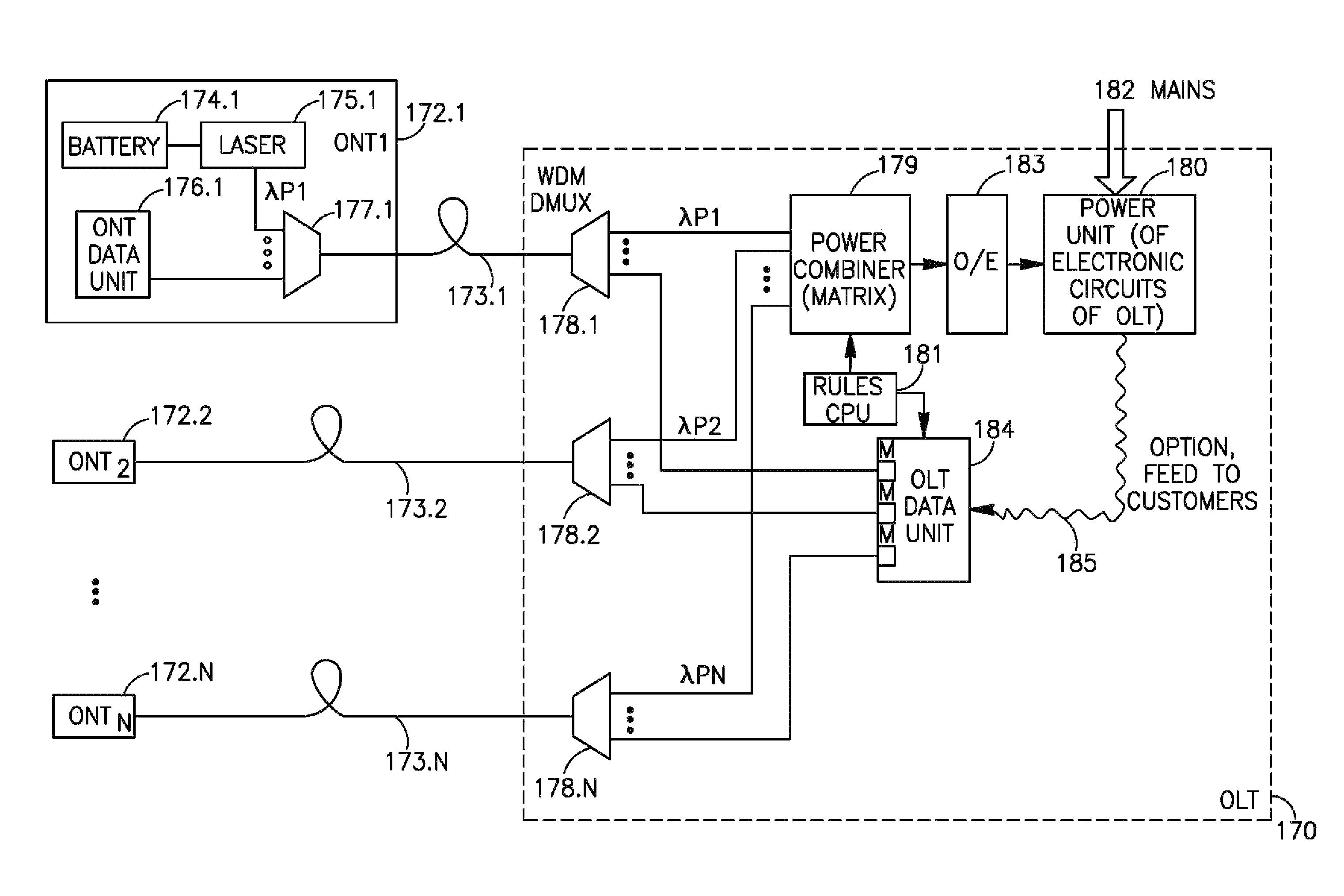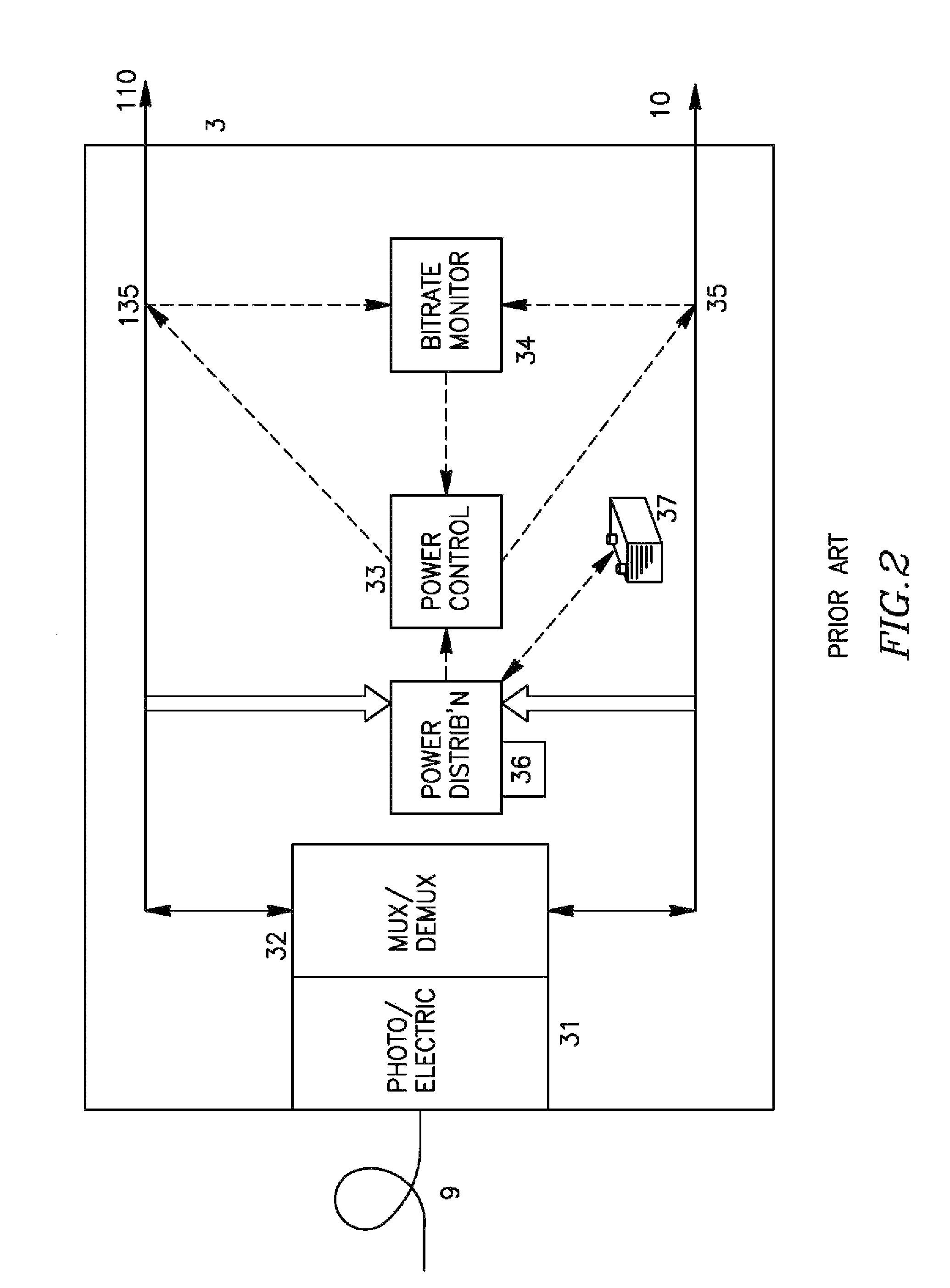Technique for remote power feeding in access networks
a technology of access network and remote feeding, which is applied in the direction of power feeding arrangement, data switching details, line-transmission details, etc., can solve the problems of telephony, reducing the practicality of simple patterns, and provoking others to eat, so as to achieve simple and cost-effective effects
- Summary
- Abstract
- Description
- Claims
- Application Information
AI Technical Summary
Benefits of technology
Problems solved by technology
Method used
Image
Examples
Embodiment Construction
[0056]FIG. 1 (prior art) illustrates an arrangement presented in WO 2009138711 mentioned in the Background of the present description. Most modern customer premises telecommunications equipment, such as computers, require much more power than can be supplied over the low-voltage telecommunications network 9, 10 and therefore have their own mains supply. It has been proposed for electrical power to be fed into the telecommunications network by way of the customer premises termination 4 from a power feed 14, and through the “final drop”10, (which remains wired) to the distribution point 3, as shown in FIG. 1. (To encourage the use of suitable customer premises equipment, the use of such equipment might be expected to attract a discount from the telecommunications provider). As each distribution point feeds a number of customer premises, the power required of each customer would be relatively small.
[0057]A problem with such an arrangement is that the network provider is reliant on the ...
PUM
 Login to View More
Login to View More Abstract
Description
Claims
Application Information
 Login to View More
Login to View More - R&D
- Intellectual Property
- Life Sciences
- Materials
- Tech Scout
- Unparalleled Data Quality
- Higher Quality Content
- 60% Fewer Hallucinations
Browse by: Latest US Patents, China's latest patents, Technical Efficacy Thesaurus, Application Domain, Technology Topic, Popular Technical Reports.
© 2025 PatSnap. All rights reserved.Legal|Privacy policy|Modern Slavery Act Transparency Statement|Sitemap|About US| Contact US: help@patsnap.com



